Great Expectations by Charles Dickens has been adapted into several miniseries and you’d expect that I, as a fan of the book, would prefer those to the film adaptations. After all, they’re longer, slower paced and theoretically include more from the rich source material. But, weirdly enough, there is only one miniseries adaptation of Great Expectations that I love, one I hope to cover on this blog next week. The rest of them range from OK to bad in my estimation. Two of my favorites are shorter movie adaptations, one from 1946 directed by Sir David Lean (Lawrence of Arabia, Doctor Zhivago) and one from 2012 directed by Mike Newell (Four Weddings and a Funeral, Harry Potter and the Goblet of Fire.) The first one isn’t a controversial choice since it’s widely considered a masterpiece, both as an adaptation of the book and a movie in its own right. The second, while not widely hated or anything, is regarded as inferior but I’m not convinced of this. I’m going to look at both movies, what they each do well and what they each do poorly.
Writing and Direction
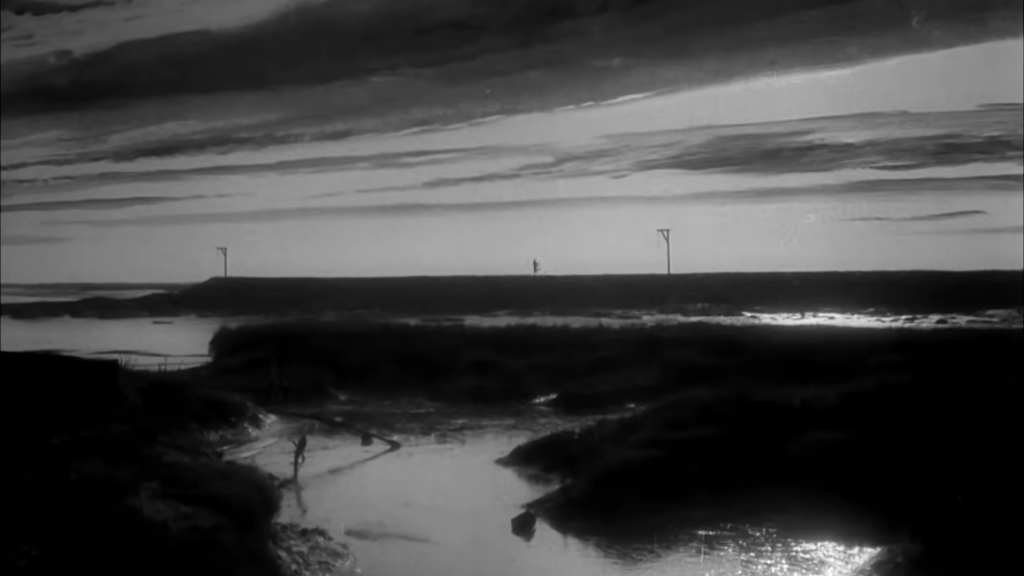

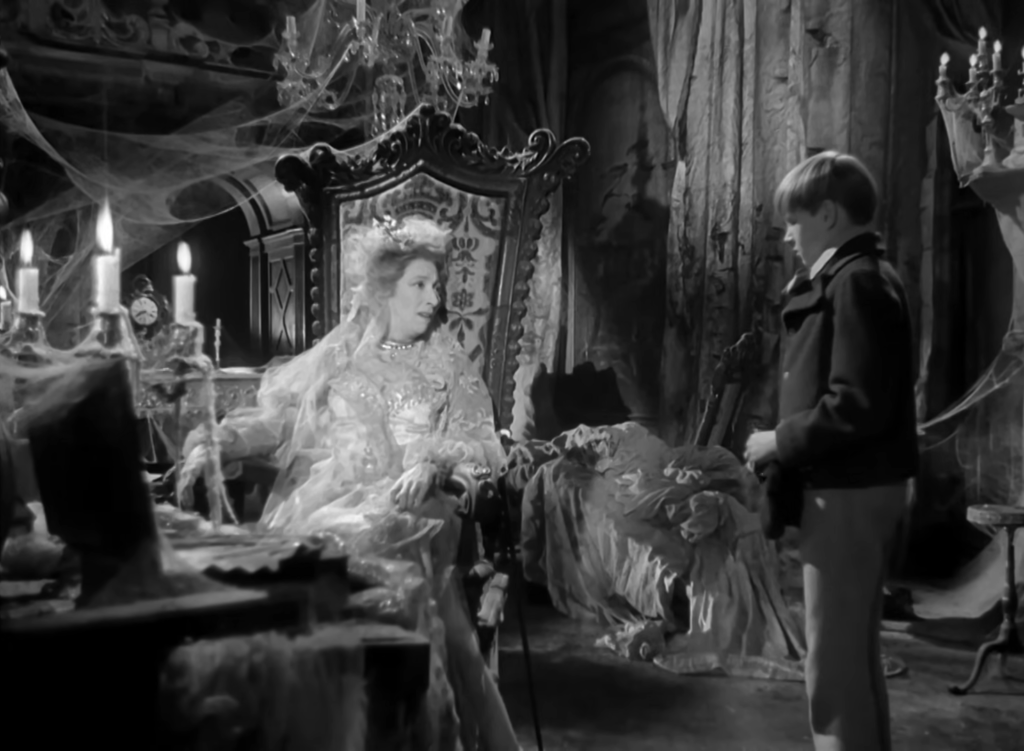
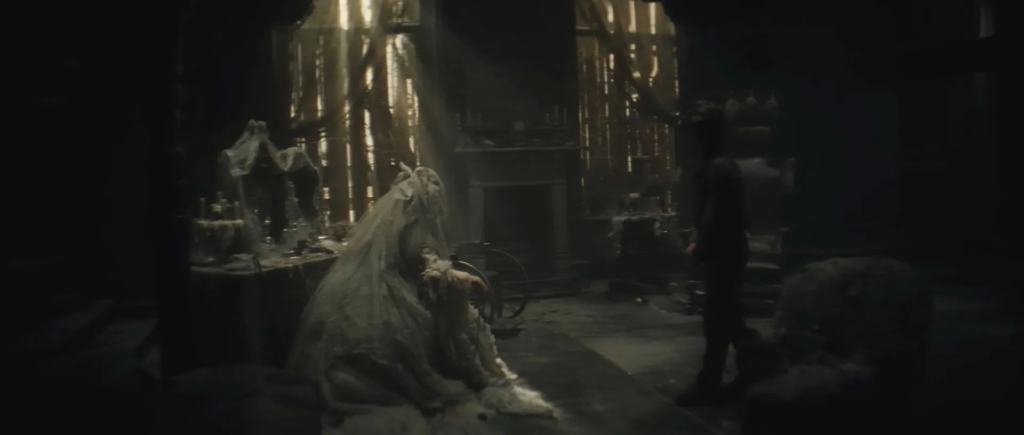
David Lean’s Great Expectations is justly celebrated for its atmosphere. The opening scene of the main character, a young boy called Pip (Philip Pirrip), being confronted by an escaped criminal in a churchyard on the lonely Kentish marshes is magnificently creepy. So is Satis House, the manor whose mistress, Miss Havisham, has decreed that everything shall stay in it exactly as it was the moment she received a letter from her con artist fiancé breaking off their engagement on what was to be their wedding day. Mike Newell’s direction for his Great Expectations is basically fine but rather bland by comparison.[1]I really wish that another Harry Potter director, Alfonso Cuaron, could have directed this version of Great Expectations instead of the 1998 movie which reimagined the story in contemporary America … Continue reading It drives me crazy how much sunlight gets through the cracks of Newell’s Satis House when it’s supposed to be lit only by candles. This makes a line about how a character raised there has never seen her mother figure’s face by daylight ridiculous. But on the flipside, the emotionally uplifting scenes in Newell’s Great Expectations tend to be much better directed than those in Lean’s which tend to be rather flat compared to the creepy ones. To be fair, a great deal of that may be due to the scriptwriting.
There’s much to love about both the screenplay for the 1946 movie by Lean, Ronald Neame, Anthony Havelock-Allen, Kay Walsh and Cecil McGivern and the screenplay for the 2012 movie by David Nicholls. Each one stays very true to the book’s story and dialogue while gracefully simplifying them for the movie format and nearly every scene is packed with little fan-pleasing details. I think of the two I prefer the 2012 script since it does a better job of developing the most important characters and even some of the less important ones as I hope to show below. There are some great lines from the 1946 script that aren’t in the 2012 one though. I especially have to praise it for including more lines from the book that indicate the character of Estella’s dark side.
In a wonderful piece for the Guardian, David Nicholls mentions voiceover narration and flashbacks as risky cinematic devices. His Great Expectations uses flashbacks but not narration. The 1946 movie uses narration but not flashbacks. Each one demonstrates the benefits of the risk it takes. When Pip returns to his old neighborhood after having a fortune and the status of a gentleman dropped in his lap in the 1946 movie, voiceover grants us access inside his head and we learn exactly how he talks himself out of visiting his old friends from when he was a lowly blacksmith’s apprentice-the only friends he had growing up. This also allows it to include one of the most haunting quotes from the book. “All other swindlers upon earth are nothing to the self-swindlers, and with such pretenses did I cheat myself.” By contrast, the 2012 movie has only an awkward scene of Pip walking all the way to the blacksmith’s forge, seeing one of his friends without being seen, and then wordlessly walking away again. On the other hand, the 2012 movie’s use of flashbacks for scenes of the various characters explaining their backstories makes them far more dramatic and compelling than the equivalent scenes in the 1946 movie, which were just a bunch of talking heads. I hasten to add that sometimes it’s more interesting to just watch a character explain their backstory and other characters react to it. I just don’t usually find it so in the 1946 Great Expectations.
Charles Dickens’s main claim to fame is his characters, so let’s take a look at some of them, shall we?
Pip
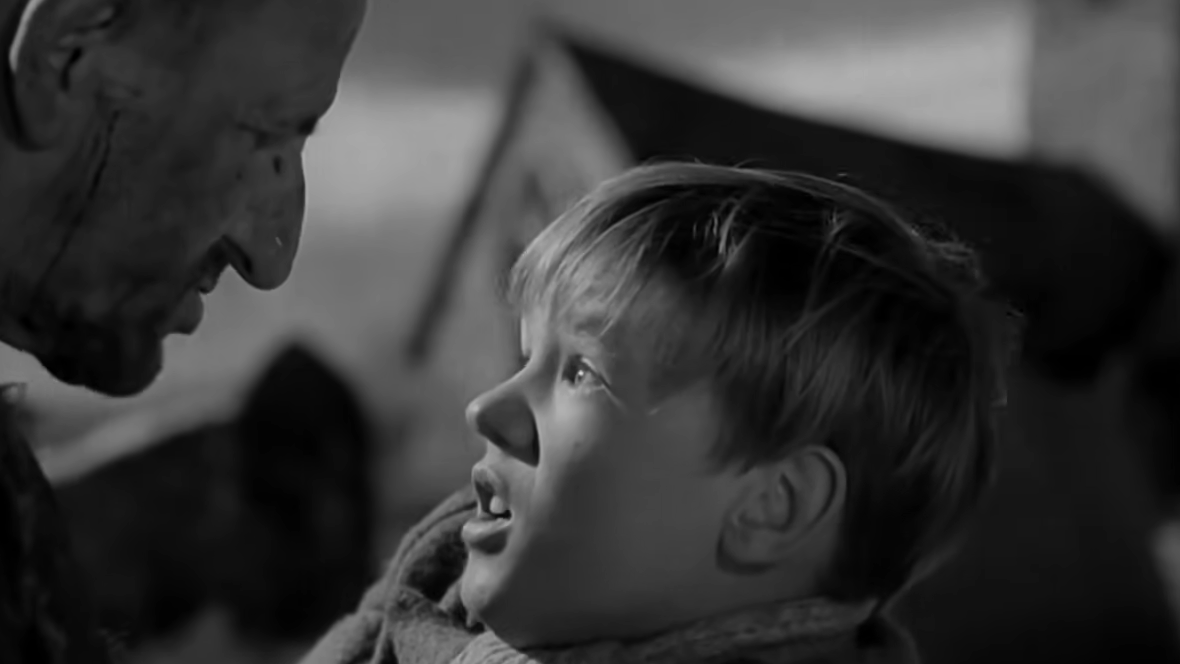
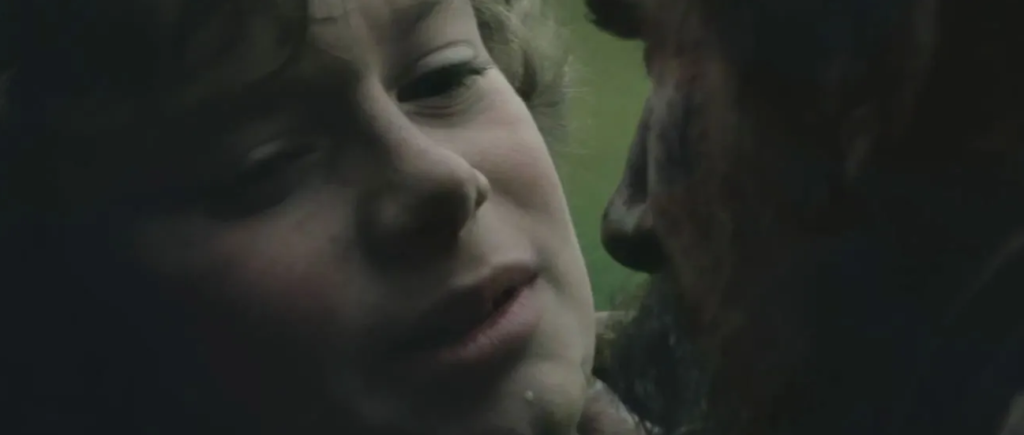
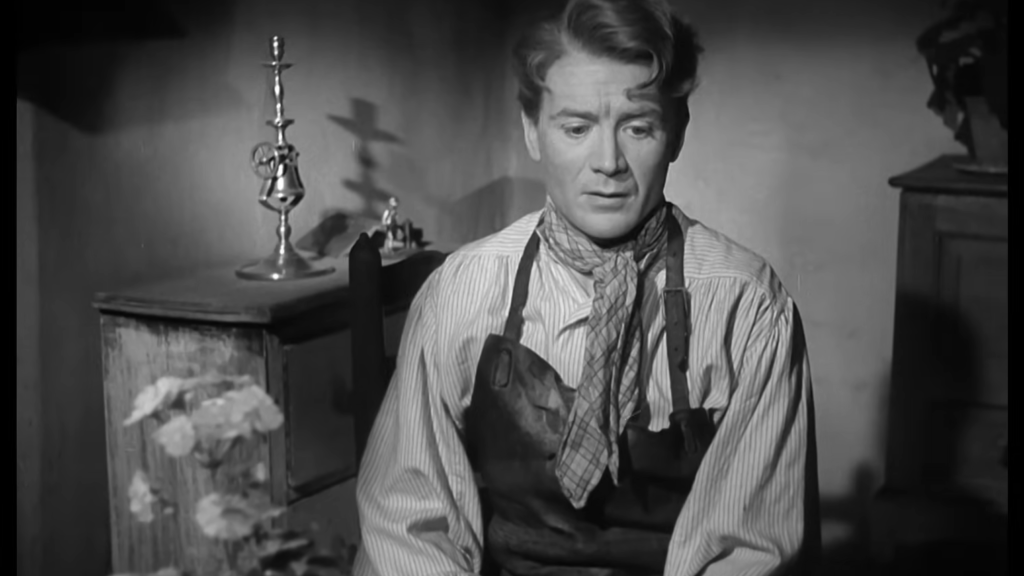
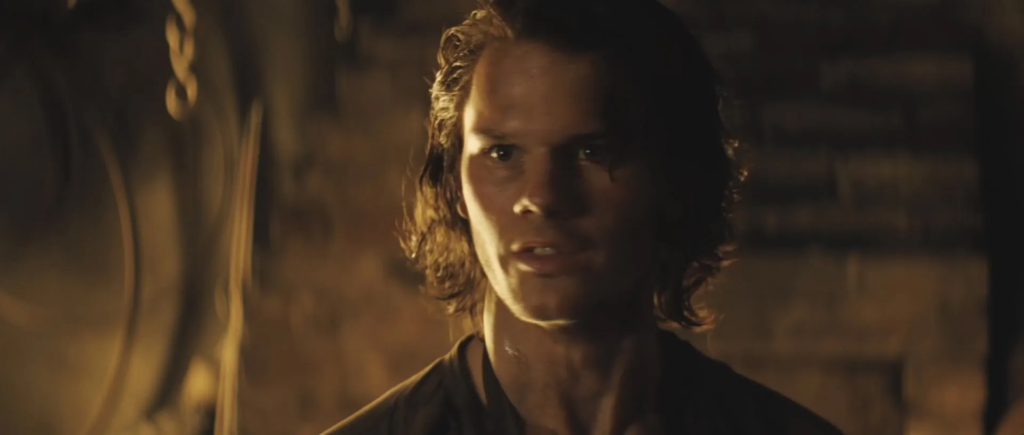
I’ve mentioned something before about movies that follow a character or characters from childhood to adulthood: it’s typical for either to actors playing them as a child to make a better impression than the one playing them as an adult or vice versa. These movies are a case in point. Young Anthony Wager who plays Pip is perfect in the role[2]Though I have read some criticize his accent as being too posh for a “common laboring boy.” A valid complaint, I suppose. with his perpetually traumatized facial expression. Believe me, considering that he’s raised by an abusive older sister, blackmailed by an escaped convict and regularly summoned to a creepy mansion to be systematically emotionally abused by a femme fatale, this kid should look perpetually traumatized. Toby Irvine is fine in the same role in the 2012 movie but not nearly as memorable.
Sir John Mills isn’t terrible or anything as the adult Pip in the 1946 film but he’s not nearly as great as Wager and the movie’s overall quality consequently takes a drop when he takes over as the lead. Part of the problem is that Mills was in his late thirties and Pip is supposed to be in his early twenties. He just feels too old for the immature character to me.[3]Part of the problem might also be that the first thing I ever saw Mills in was Swiss Family Robinson (1960) in which he played the father. Jeremy Irvine, brother of Toby, is far better as the adult Pip in the 2012 film, bringing much more youthful vigor and enthusiasm to the role. I have read some criticism to the effect that he’s too palpably angry and emotional for the character’s culture. But, hey, Pip is supposed to be an unusually passionate person and this movie doesn’t have voiceover to give us access to his thoughts and feelings.[4]And while this version of Pip is definitely one of the angriest I’ve seen, it never annoys me the way Ioan Gruffud’s even angrier one from the 1999 miniseries does. If the overall quality of the 1946 Great Expectations drops for me when Mills takes over as Pip, the overall quality of the 2012 one improves when Irvine takes over as the character.
Estella
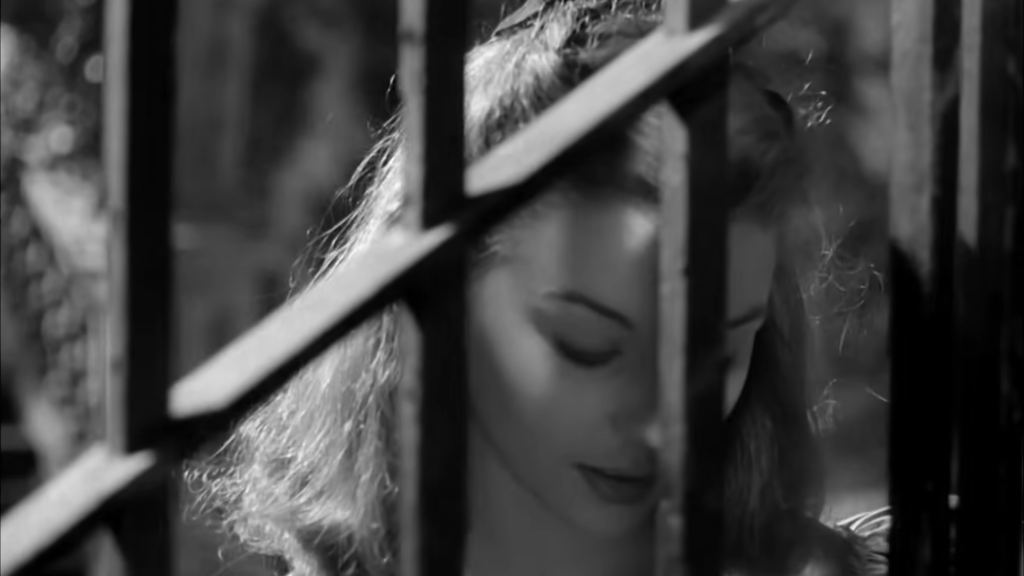
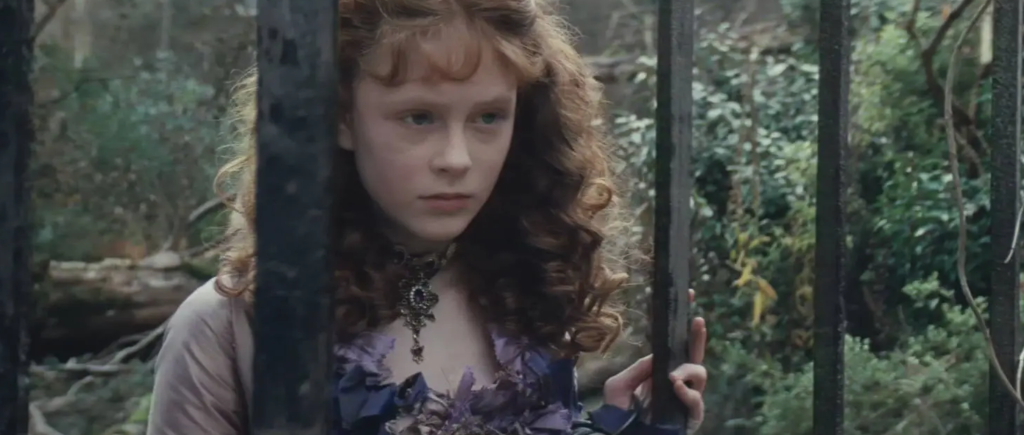
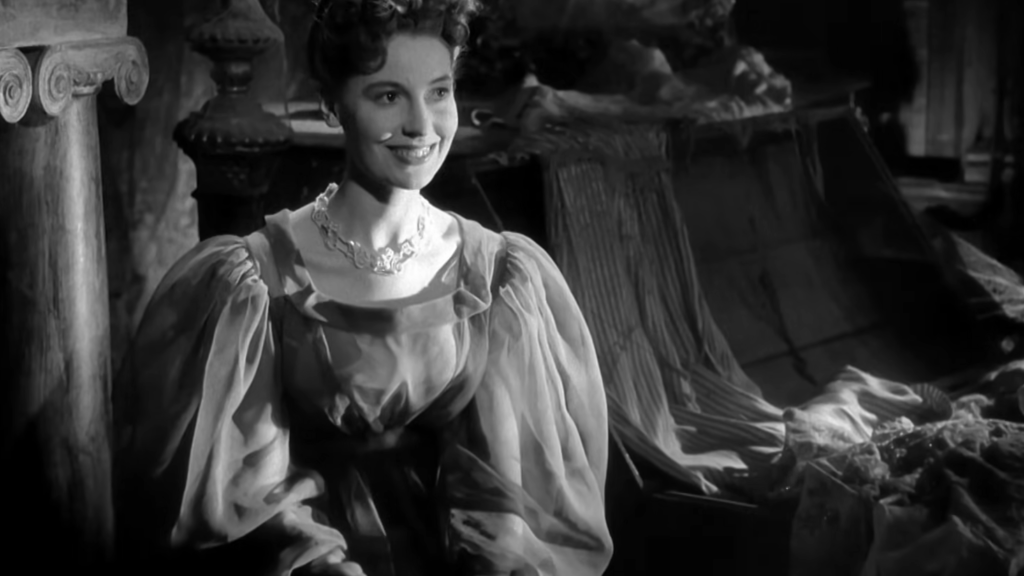
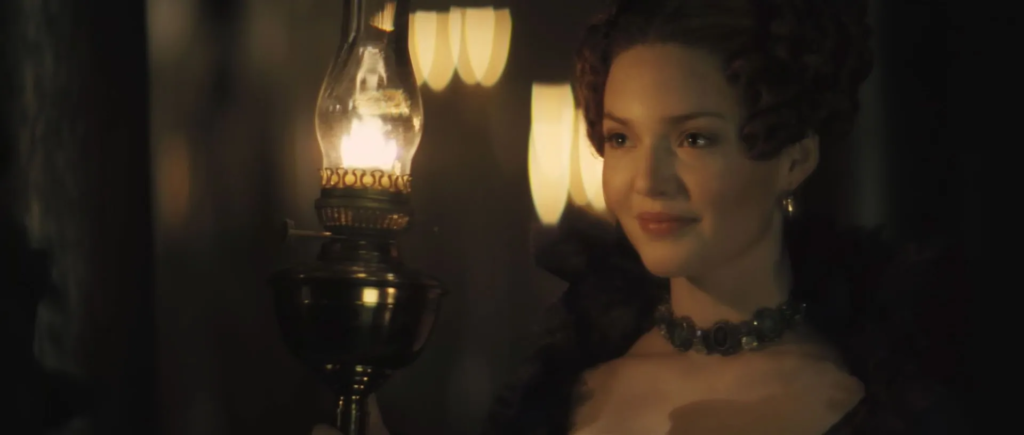
No one should envy an actress who has to play the young Estella, the girl at Satis House who bewitches Pip. She has to portray a snobby, sadistic bully while also coming across as beautiful, elegant and somehow charming enough to make Pip’s lifelong romantic obsession with her understandable. Jean Simmons in the 1946 movie knocks it out of the ballpark! Helena Barlow is sadly less effective in the role in the 2012 film. Her performance isn’t terrible or anything, but she just doesn’t have the screen presence necessary to make Pip’s infatuation with her believable, especially when there’s another girl in his life who is no less pretty, has the same social status and is actually nice to him.[5]Her hairdos are also relatively less goofy looking. There are a lot goofy looking hairdos in both these movies but if they’re period accurate, I suppose I can’t complain. I feel cruel for critiquing such a young actress for not being convincing as a charismatic supermodel[6]I’m sure Barlow would do better as Estella now that she’s had more acting experience. but it’s impossible for me to critique the movie without doing so, especially as I’m comparing it the 1946 one. For what it’s worth, Jean Simmons was actually a teenager when she played Estella and so she had that advantage over Barlow.
Speaking of charisma or a lack thereof, Valerie Hobson as the adult Estella is rather a disappointment after Simmons, in some ways even more than John Mills is a disappointment after Anthony Wager. In her defense though, the adult Estella is arguably an even more difficult role than the youthful one. She’s still cruel and callous but not sadistic like she was as a child. We’re told that she’s tormenting many men by making them fall in love with her and then crushing their hearts, but she does this out of obligation to the vengeful misandrist who raised her, not for fun. In fact, we get the impression she really resents this obligation and wishes for a different life. But this is out of boredom, not compassion for her victims. She’s grown genuinely fond of Pip in a strange way and tries to avoid hurting him, but she can’t really empathize with his feelings for her, limiting any compassion on her part. The actress has to balance a ton of contradictions to play this character. She needs to be both casual and intense, cold yet warm.[7]Readers may remember I wasn’t a fan of Anya Taylor-Joy’s portrayal of Emma Woodhouse but I think she’d actually make a great Estella. If she did play her, it’d be the second … Continue reading During her early scenes, Hobson mostly just plays her as casual to the point of being bland and boring.[8]From what I understand, Hobson disliked working with David Lean and said he gave her inadequate direction, so maybe the fault lies with him. Fortunately, as the movie goes on and Estella is brought into conflict with Pip more, giving the actress more specific emotions to show, she improves. I still wish Jean Simmons could have played the character for the whole movie somehow.
Holliday Grainger certainly isn’t boring as the adult Estella in the 2012 film. In fact, for what it is, her performance is great, but I still consider it fundamentally misguided. As much as I love the screenplay for this adaptation, I have to admit that the fault lies with it or at least the script got the character off on the wrong foot. Like the 2011 miniseries, this version has Miss Havisham end young Pip’s visits to her house because she can tell that Estella is becoming genuinely attached to him, which would not fit in with her plans for the girl at all. (Remember this is while Pip is still common! In the book, she only becomes friendly to him once he’s a gentleman.) We’re told that Estella is “hard and haughty and capricious to the last degree” and that she’s deceiving many men. But we never see any evidence of this in Grainger’s performance. She comes across as sad and wistful in every one of her scenes. I can live with softening the character a little bit, especially in a shorter adaptation that has less time to develop her, but not in every single scene! It’s all but stated that this Estella really does love Pip but is in denial about it. This makes Pip seem far less delusional in his pursuit of her and an important choice of Estella’s, which was difficult to understand in the source material, downright incomprehensible here. Not helping much is that while Holliday Grainger is certainly a beauty, she’s not necessarily beautiful in an Estella-esque way. I feel that Estella should be tall and stately in keeping with her “inaccessibility” to use the book’s description. Grainger’s Estella, if anything, appears to be shorter than Jeremy Irvine’s Pip.
Miss Havisham
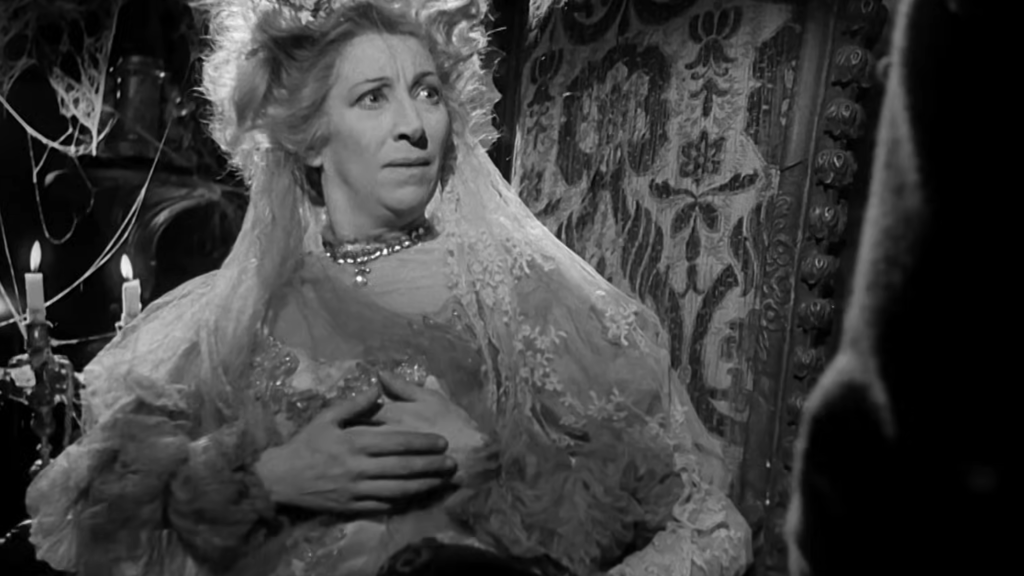
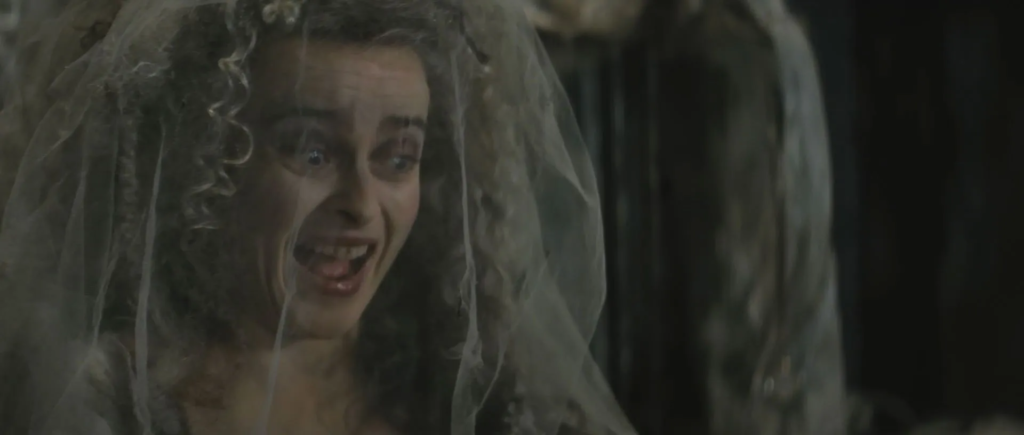
With the decaying wedding dress she always wears and the decaying wedding cake she keeps in her house, Miss Havisham is one of the most unforgettable antagonists in Dickens-no small praise-and for many readers, the most memorable character in Great Expectations. Martita Hunt is effectively eerie and brooding in the role in the 1946 movie. If I have a criticism of her performance, it’s that she could stand to be a little more energetic once in some moments, such as her rant ordering Pip to love Estella. (“If she favors you, love her. If she wounds you, love her…”) Don’t get me wrong. I prefer Miss Havisham to be somewhat subdued and withdrawn in her early scenes as if she’s always preoccupied with the grudge that she’s nursing. But I also feel like she should be more palpably gleeful in later scenes as her vengeance seems to be coming to fruition. It would be flat slander to accuse Hunt’s Miss Havisham of never being palpably gleeful though.
Helena Bonham Carter has been accused of doing nothing at this point in her career but recycle her performance as Bellatrix Lestrange from the Harry Potter movies. Looking back at all the recent movies in which I’ve seen her, I wouldn’t say that’s totally fair, but I will say with regret that her portrayal of Miss Havisham in the 2012 movie is very much what has become the generic Helen Bonham Carter performance. Still, the generic Helena Bonham Carter performance at least makes for a good solid cartoon character, not like Gillian Anderson’s irritating, squeaky-voiced Miss Havisham in the 2011 Great Expectations miniseries whom one critic accurately described as “the ghost of all bad Ophelias.” I don’t understand why she seems to be asleep or half asleep whenever Pip enters her room. Isn’t the idea of her sitting there, alert and waiting for him, creepier? But there are some interesting things about this Miss Havisham. When Pip says the only card game he knows is Beggar My Neighbor and she tells Estella to “beggar him,” she laughs like that’s the most hilarious joke she’s ever heard. Again, I prefer something less hammy for those early scenes but it’s not a bad take on the character. In her final scenes of penitence, Carter grants my wish that she treat this as one of her serious performances and actually makes her Miss Havisham more sympathetic than Hunt’s or any other actress’s I’ve seen.
Joe Gargery
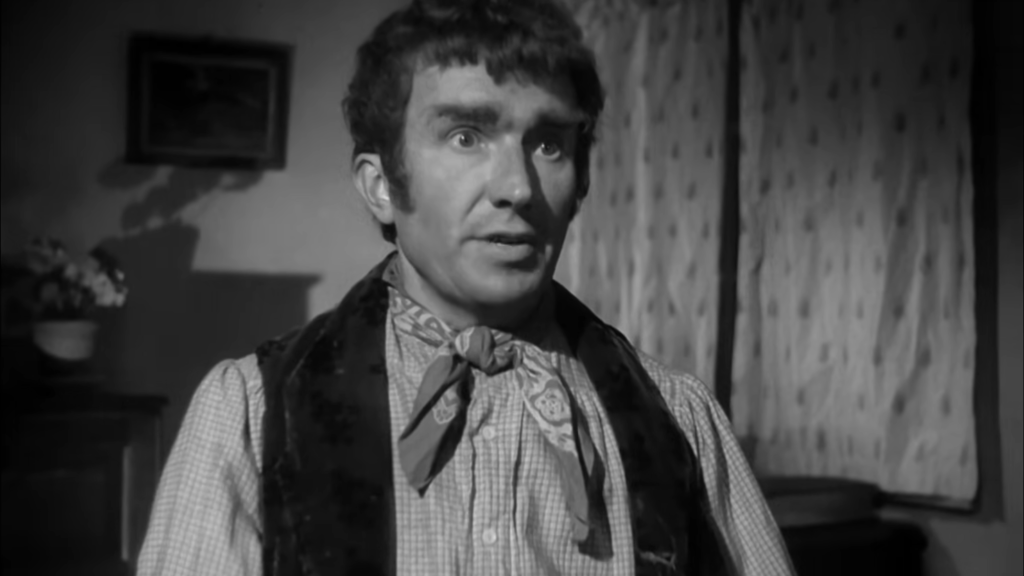
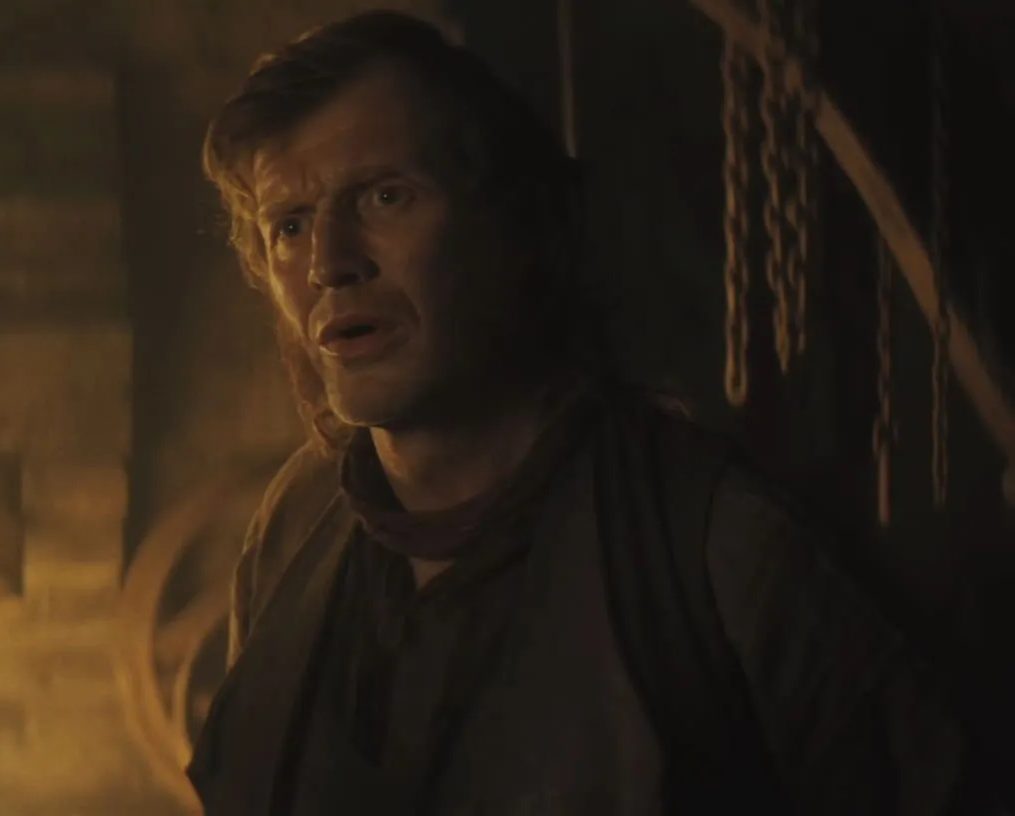
If Miss Havisham is this story’s most dastardly villain[9]Another character, Compeyson (played by George Hayes in 1946 and William Ellis in 2012), is arguably a better candidate for the honor of being the main villain but it’s easy to forget about him., Pip’s brother-in-law, Joe Gargery, is its most lovable hero. Bernard Miles is appropriately gentle and childlike in the role in the 1946 movie, but he doesn’t bring a lot of depth to the character.[10]He also doesn’t look particularly muscular for a blacksmith but that’s a relatively minor criticism. For example, when Pip, having had wealth and status suddenly bestowed upon him, leaves him to be a gentleman in London, we don’t get the impression that Joe is really saddened but hiding it for Pip’s sake. To be fair, a lot of the blame for that lies with the script and direction. It feels as if David Lean simply wasn’t interested in Joe. Granted that the character wasn’t going to be as fully developed as in the book, there are far fewer scenes of him than there should be and the scenes we get are directed with none of the flair of, say, the scenes at Satis House. One bit of comic business in the scene of Joe’s awkward visit to London is downright bad. Joe is supposed to rush over to grab his hat before it falls off its stand and fumbles with it so much that it falls in the food. It’s staged so awkwardly that it looks as if a demon suddenly possessed Joe so he could ruin his hat and the meal. Happily, Jason Flemyng’s Joe in the 2012 movie is even more appealingly gentle and childlike as well as even funnier in the bits where he’s played for laughs and much better served by the script. The final scenes of reconciliation between him and Pip are far more heartwarming than their perfunctory counterparts in the 1946 film.
Biddy
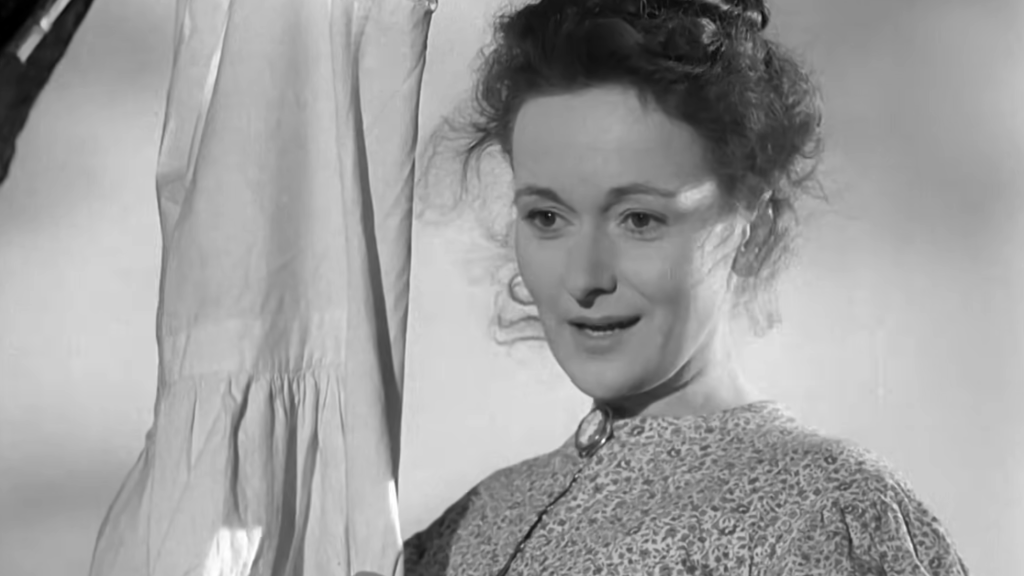
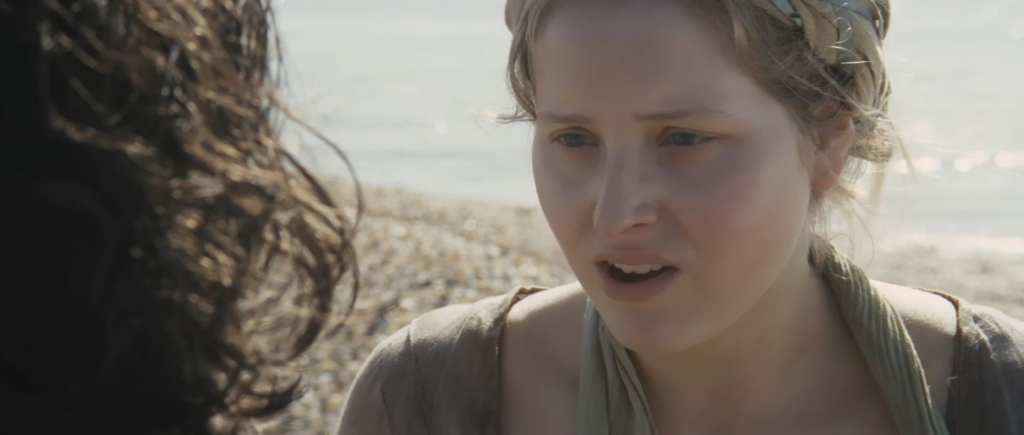
The novel’s saintliest character next to Joe is Biddy, Pip’s aforementioned alternative love interest to Estella. The 1946 movie ages her up and makes her more of a mother figure to him. Goodness knows the kid needs one! Eileen Erskine is likeable and appealing in the role, but the movie sadly though understandably doesn’t give her much to do and it feels like she was included out of obligation. Biddy keeps her original age and is much more of a possible love interest in the 2012 movie in which she’s played by Bebe Cave as a child and Jessie Cave as an adult. In fact, at one point, she grabs Pip and kisses him on the lips, which I’m fairly sure would have been considered inappropriate in this time period.[11]Pip also kisses Estella on the lips right after she’s told him they’re never getting together. This was obviously done just so they could show the leads kissing in the trailer. The shooting script describes the moment thus. “Her hand reaches across and takes Pip’s hand (or perhaps even a kiss?)” They probably should have shown restraint and left it at that when filming or had the kiss just be on the cheek. It’s horribly frustrating for fans of the book to read that script and discover that some great lines of the literary Biddy’s were going to be in the movie but were cut for time. I especially wish the scene of her upbraiding Pip for his patronizing attitude towards Joe had made the cut.[12]There’s plenty of other great stuff in the script that ultimately wasn’t in the movie. The whole thing is well worth a read. Still, while she’s not nearly as memorable a character as in the book, this adaptation still probably does more justice to her than the 1946 one. Her introductory scene at the local schoolhouse effectively establishes her as kind, competent and someone who has had to grow up very quickly and a brief shot of her bursting into tears after Pip leaves for London is more moving than almost anything in the 1946 Great Expectations. And for once, the actor playing the character as a child and the one playing the character as an adult are equally great. The Cave sisters look so much alike in this movie, I barely noticed when the switch occurred.
Abel Magwitch
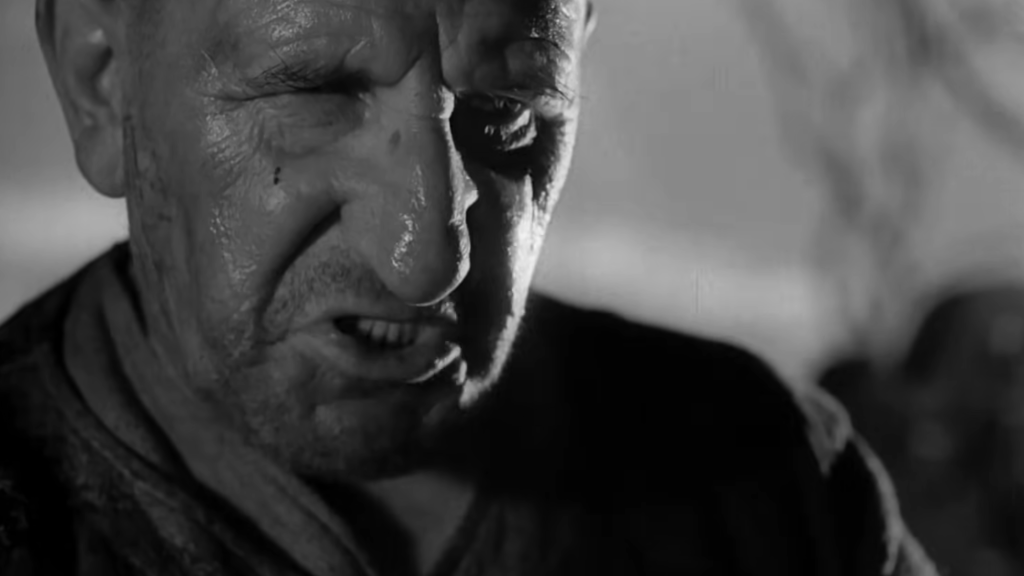
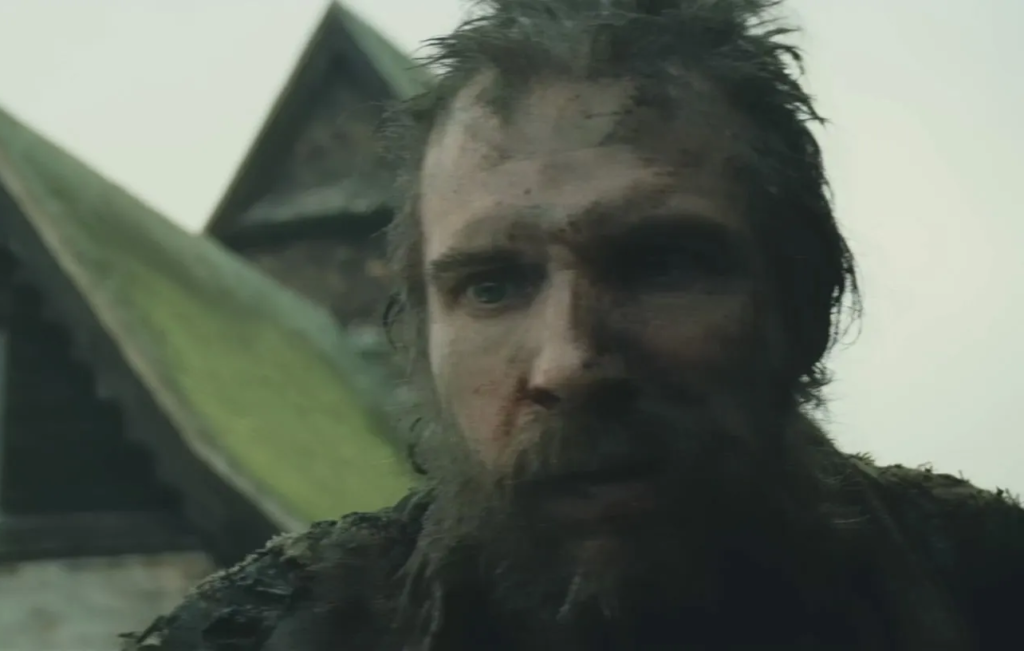
As Abel Magwitch, the escaped convict who terrorizes the young Pip in the churchyard, Finlay Currie is memorably fearsome in the 1946 movie’s early scenes. However, when Magwitch unexpectedly reenters Pip’s life in the second half and becomes a much more sympathetic figure, Currie’s performance is less effective. That’s not to say it’s bad. Just that it isn’t great. Ralph Fiennes as Magwitch in the 2012 film, on the other hand, is wonderful throughout the whole thing, helping it achieve its biggest tearjerking moments. He’s helped of course by the fact that the script devotes much more time to his backstory than that of the 1946 adaptation. (Remember what I wrote about flashbacks?) Fiennes still deserves a lot of credit though. Along with Jeremy Irvine and Bebe and Jessie Cave, he’s probably the 2012 cast’s biggest asset.
Random Thoughts on Other Characters
As Pip’s abusive older sister in the 1946 movie, Freda Jackson looks like Mrs. Tweedy from Chicken Run-which makes all kinds of sense! Sally Hawkins is less intimidating in the role in the 2012 version but she’s still good.
Miss Havisham’s gold-digging relatives aren’t much more than a cameo in either movie, but they serve more of a purpose in the 2012 one. They’re also very funny thanks to the performances of Pooky Quesnel, Kate Lock, Richard James and Roberta Burton. (Everley Gregg and Anne Holland play two of them in the 1946 movie. The other two are uncredited.) I’m not sure if it was such a good idea though to have one of them call Estella a “little bitch.”[13]That wasn’t in the script by the way.
The menacing character of Orlick is cut from both adaptations, reasonably so. While Orlick is a memorable villain in the book, he usually comes across as a bit extraneous in the adaptations that include him. With the 1946’s movie’s flair for creepiness and suspense though, I do wonder what it could have done with the final confrontation between him and Pip.
As Mr. Jaggers the lawyer, neither Francis L. Sullivan in the 1946 movie nor Robbie Coltrane in the 2012 one is quite as intimidating as the book’s character. Of course, you could argue he’s not meant to be as intimidating in the 2012 movie, which eventually humanizes him and has him admit to Pip that “there have been too many secrets.” I maintain this confession would have been more interesting though if he had been smugger and icier earlier. Come to think of it, the 1946 adaptation ends up humanizing Jaggers too in a subtler way.
The “Aged Parent” of Jaggers’s clerk, Wemmick (Ivor Barnard in 1946, Ewen Bremner in 2012), gets a cameo in both movies. (O. B. Clarence plays him in the 1946 film and Frank Dunne in the 2012 one.) The 1946 cameo is funnier but feels like it was included out of obligation. I actually prefer the 2012 one since it serves to develop Wemmick’s character. The scene’s joyfulness also makes for a nice break from the cynicism of that section of the story.
The Ending
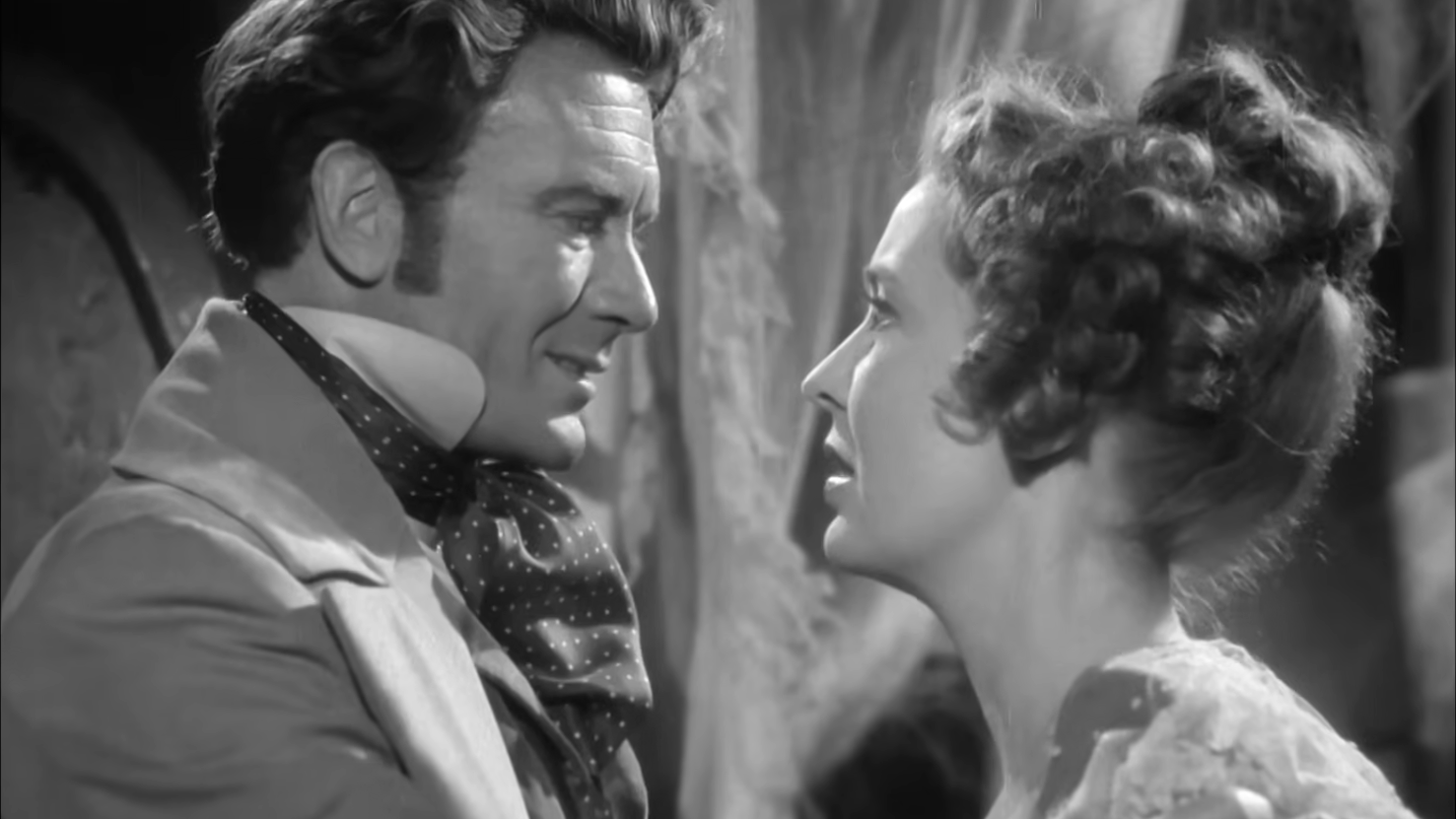
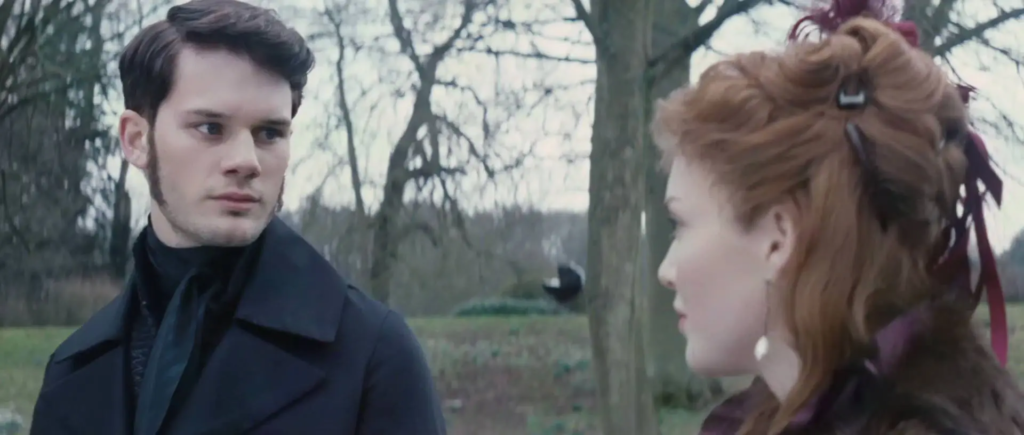
Regrettably, there’s no way to discuss how the 1946 Great Expectations adapts the book without getting into the ending. I’ll try to keep the details about the movie-specific aspects of it vague, but I am going to have to give away the book’s conclusion. If you haven’t read it and don’t want it spoiled, skip to the end of this blog post.
The 1946 adaptation, to its credit, is so true to the book for most of its runtime that when it dramatically veers from it in the last scene, it’s downright jarring. The first time I watched the movie, I was too dumbfounded by the ending to know whether I liked it or not. After repeated viewings and years to reflect on the matter, I’ve decided I dislike the ending. It’s well written but losing Estella’s years of suffering makes her redemption feel unearned compared to the book. To be fair though, she does undergo an interesting humiliation in this version that she never does in the source material. I also dislike the way this revised ending makes Pip more of a romantic hero and Miss Havisham more of a symbol of evil whereas in the book, she’s ultimately seen as human and pitiable.[14]Frustratingly, nearly every adaptation has Pip be less forgiving to her than Dickens had him be. In the book, he tells her “I want forgiveness and direction far too much, to be bitter with … Continue reading
The 2012 movie’s ending is pretty much the same as that of the book except that it changes the location. This is somewhat unfortunate as I consider the location of the book’s last scene thematically significant but, on the plus side, it does allow the movie to show that Pip’s friend, Herbert Pocket (Olly Alexander in this one, Alec Guinness in the 1946), has remained helpful to him after his fortunes fell. The same can’t be said of the other film. Anyway, the 2012 version’s ending would be beautiful if only the adaptation hadn’t softened Estella’s character so much prior to it. The result is that it’s hard to see how she’s supposed to have changed at all. I can’t really see contrast between Holliday Grainger’s performance in this scene and every other one. That’s the only major problem with this Great Expectations as an adaptation, as opposed to any shortcomings it has as a movie in its own right[15]Though I’d argue it ends up being both., but it’s an aggravatingly big one.
Concluding Thoughts
For me, these two movies have a weird relationship where what each one does well the other does poorly. The 1946 film does a much better job with creepy characters and aspects of the book. The 2012 one does much better with the book’s healthier minded characters and heartwarming aspects. Which one you favor likely depends on what you consider the most important part. If only there were a way to combine their strengths! Actually, the one miniseries adaptation of Great Expectations that I do love does just that and I intend to write about it next week. Stay Tuned.

References
| ↑1 | I really wish that another Harry Potter director, Alfonso Cuaron, could have directed this version of Great Expectations instead of the 1998 movie which reimagined the story in contemporary America and wasn’t nearly as well written. His emotional style would have been perfect for Dickens. Kenneth Branagh is another director whom I’d have preferred for this script. |
|---|---|
| ↑2 | Though I have read some criticize his accent as being too posh for a “common laboring boy.” A valid complaint, I suppose. |
| ↑3 | Part of the problem might also be that the first thing I ever saw Mills in was Swiss Family Robinson (1960) in which he played the father. |
| ↑4 | And while this version of Pip is definitely one of the angriest I’ve seen, it never annoys me the way Ioan Gruffud’s even angrier one from the 1999 miniseries does. |
| ↑5 | Her hairdos are also relatively less goofy looking. There are a lot goofy looking hairdos in both these movies but if they’re period accurate, I suppose I can’t complain. |
| ↑6 | I’m sure Barlow would do better as Estella now that she’s had more acting experience. |
| ↑7 | Readers may remember I wasn’t a fan of Anya Taylor-Joy’s portrayal of Emma Woodhouse but I think she’d actually make a great Estella. If she did play her, it’d be the second time to my knowledge that the same actress has portrayed both Emma and Estella. |
| ↑8 | From what I understand, Hobson disliked working with David Lean and said he gave her inadequate direction, so maybe the fault lies with him. |
| ↑9 | Another character, Compeyson (played by George Hayes in 1946 and William Ellis in 2012), is arguably a better candidate for the honor of being the main villain but it’s easy to forget about him. |
| ↑10 | He also doesn’t look particularly muscular for a blacksmith but that’s a relatively minor criticism. |
| ↑11 | Pip also kisses Estella on the lips right after she’s told him they’re never getting together. This was obviously done just so they could show the leads kissing in the trailer. |
| ↑12 | There’s plenty of other great stuff in the script that ultimately wasn’t in the movie. The whole thing is well worth a read. |
| ↑13 | That wasn’t in the script by the way. |
| ↑14 | Frustratingly, nearly every adaptation has Pip be less forgiving to her than Dickens had him be. In the book, he tells her “I want forgiveness and direction far too much, to be bitter with you.” |
| ↑15 | Though I’d argue it ends up being both. |
